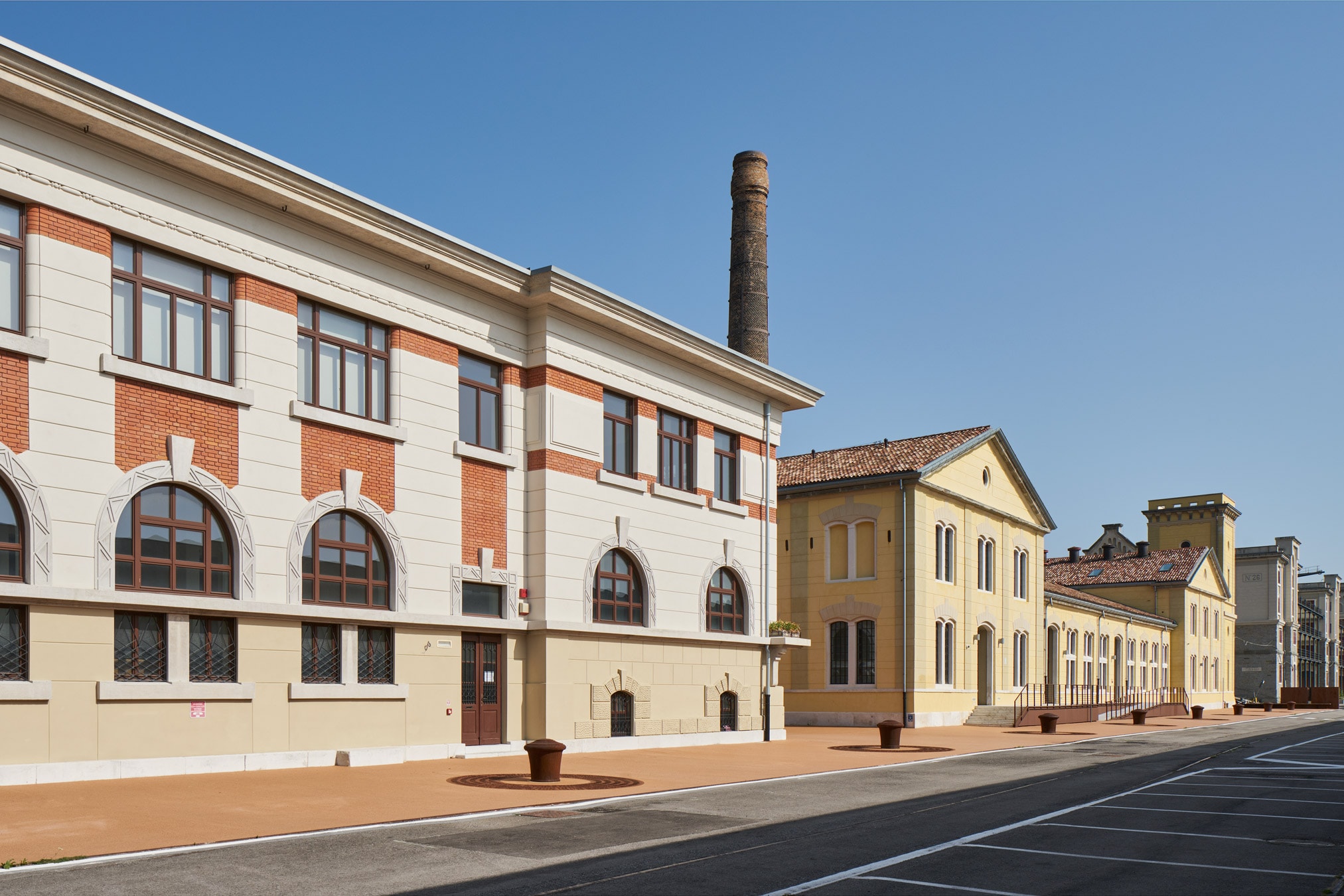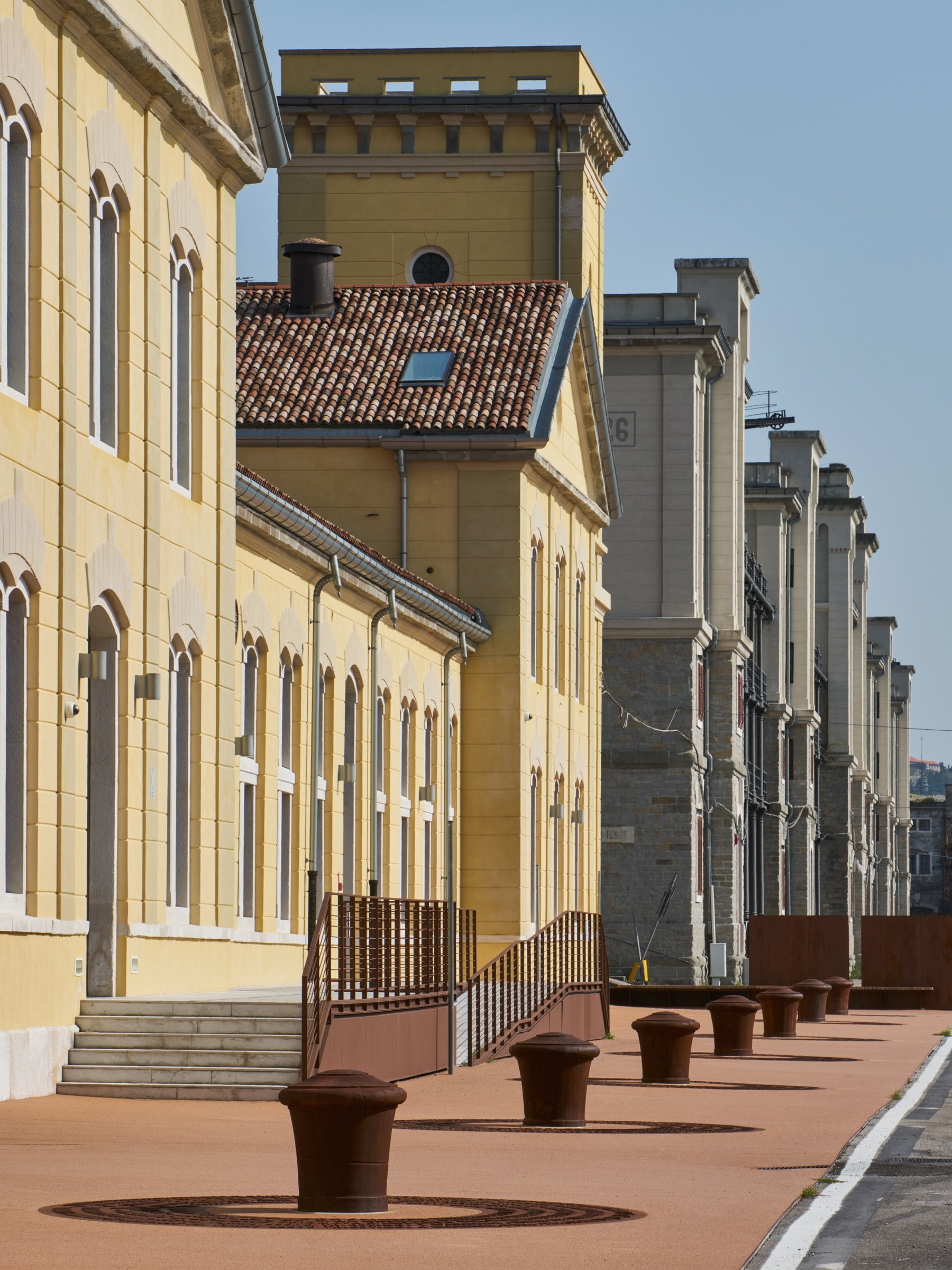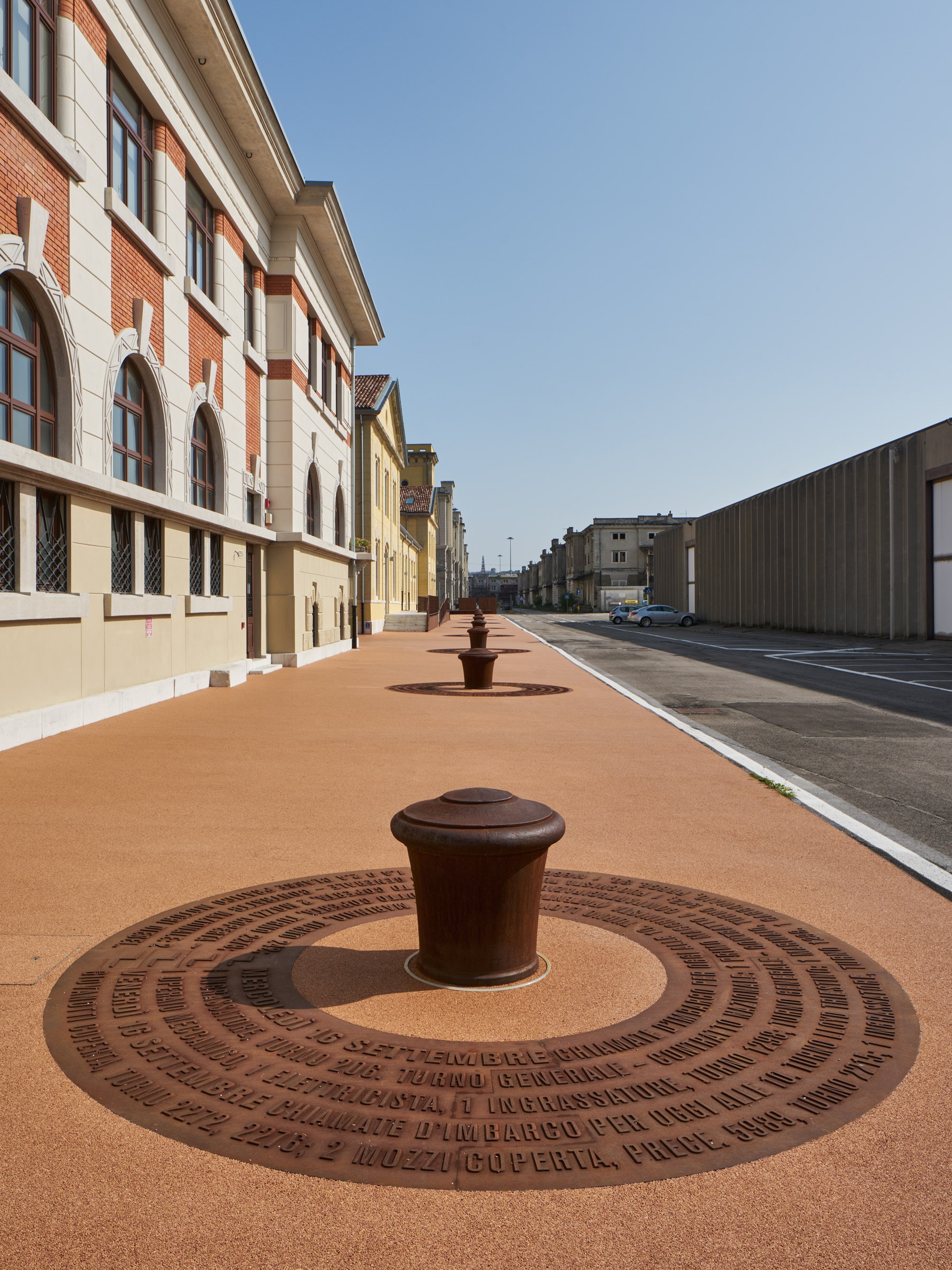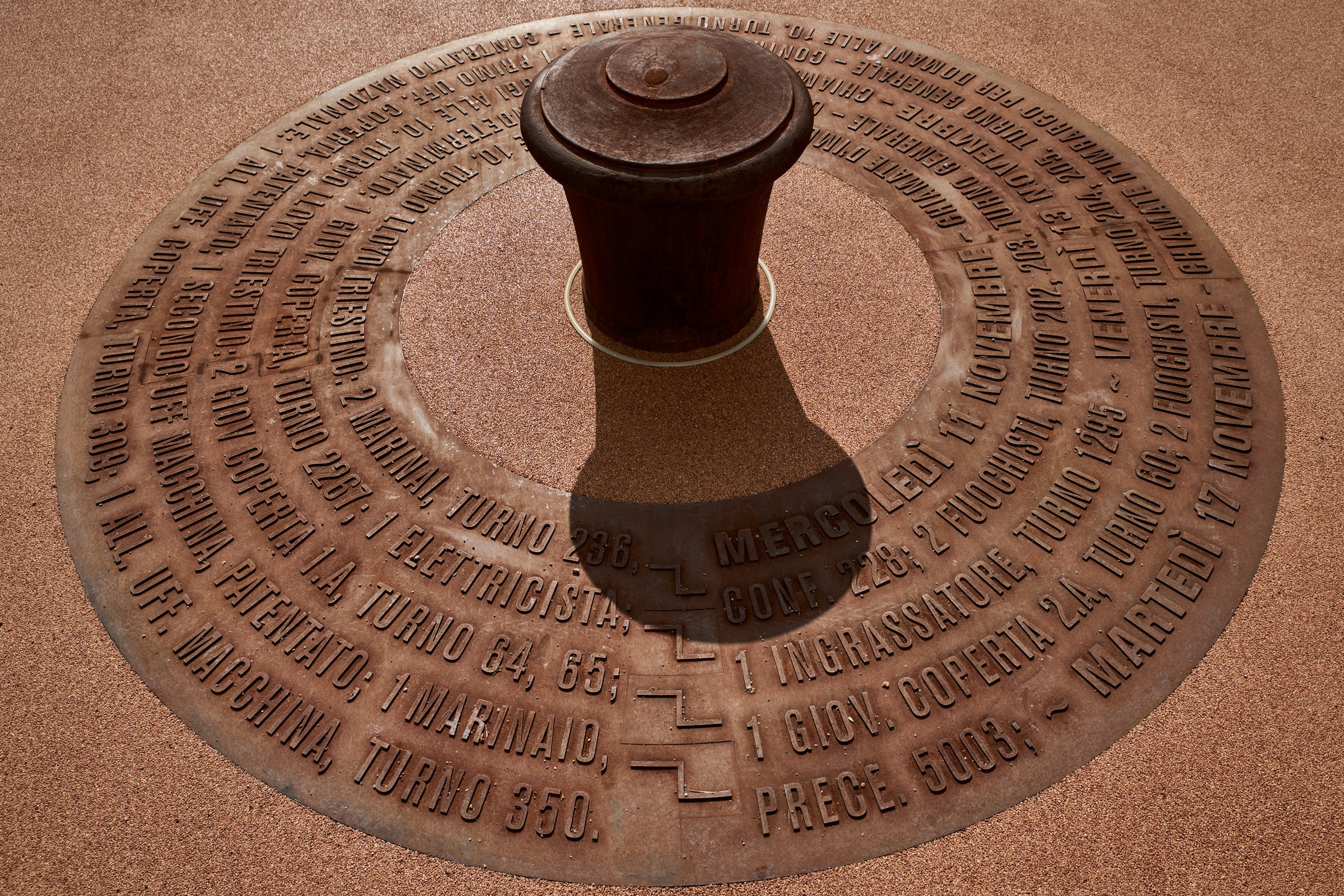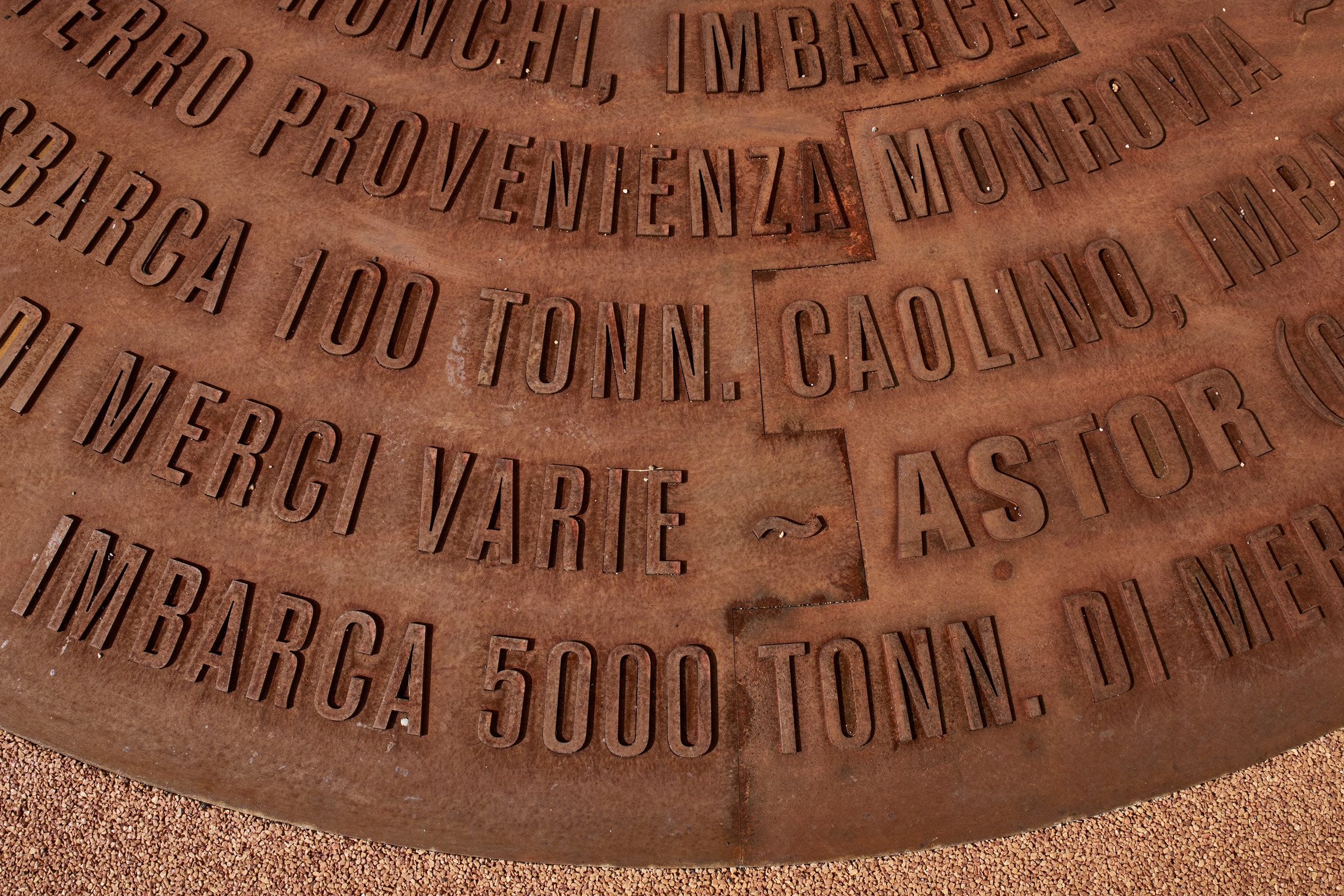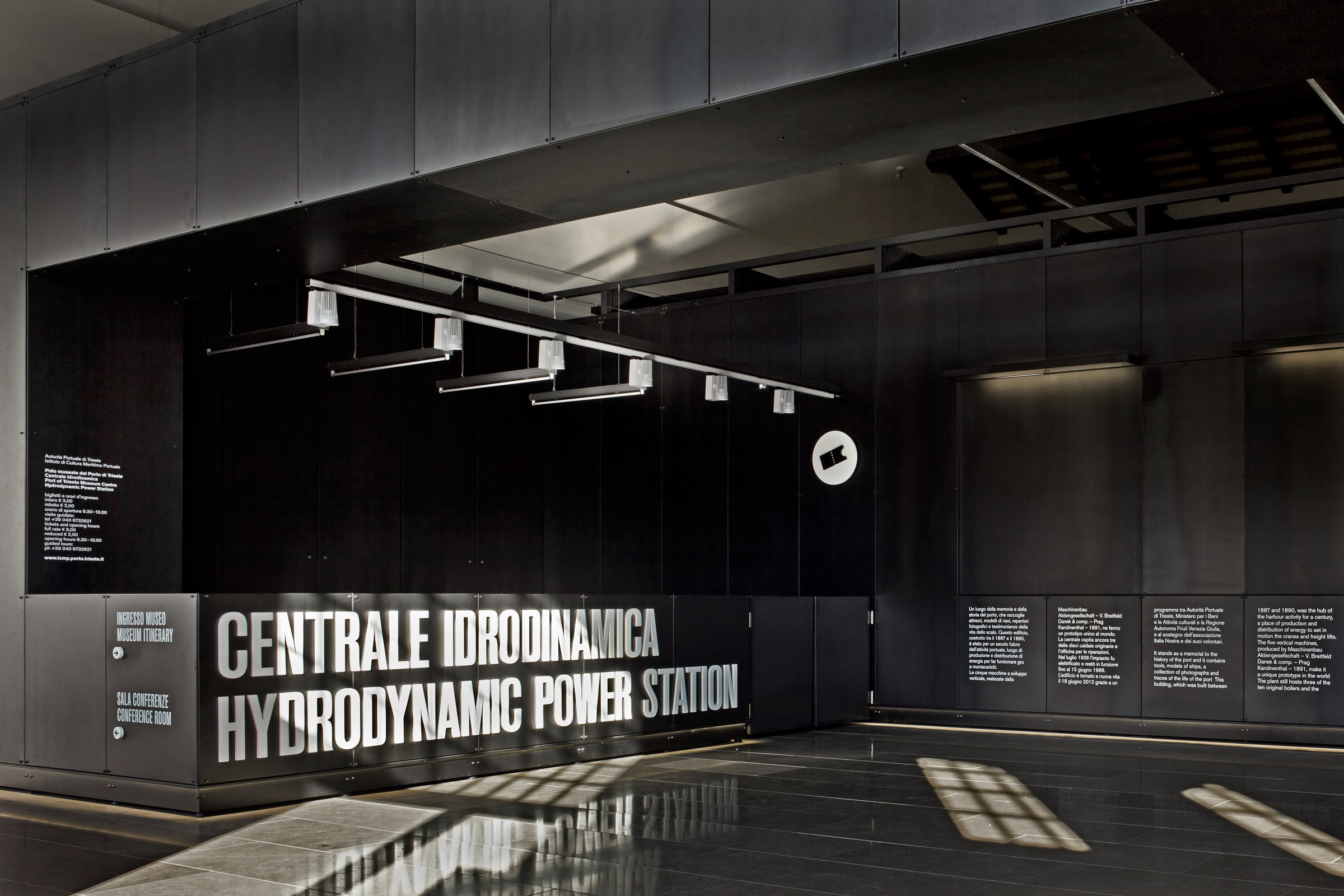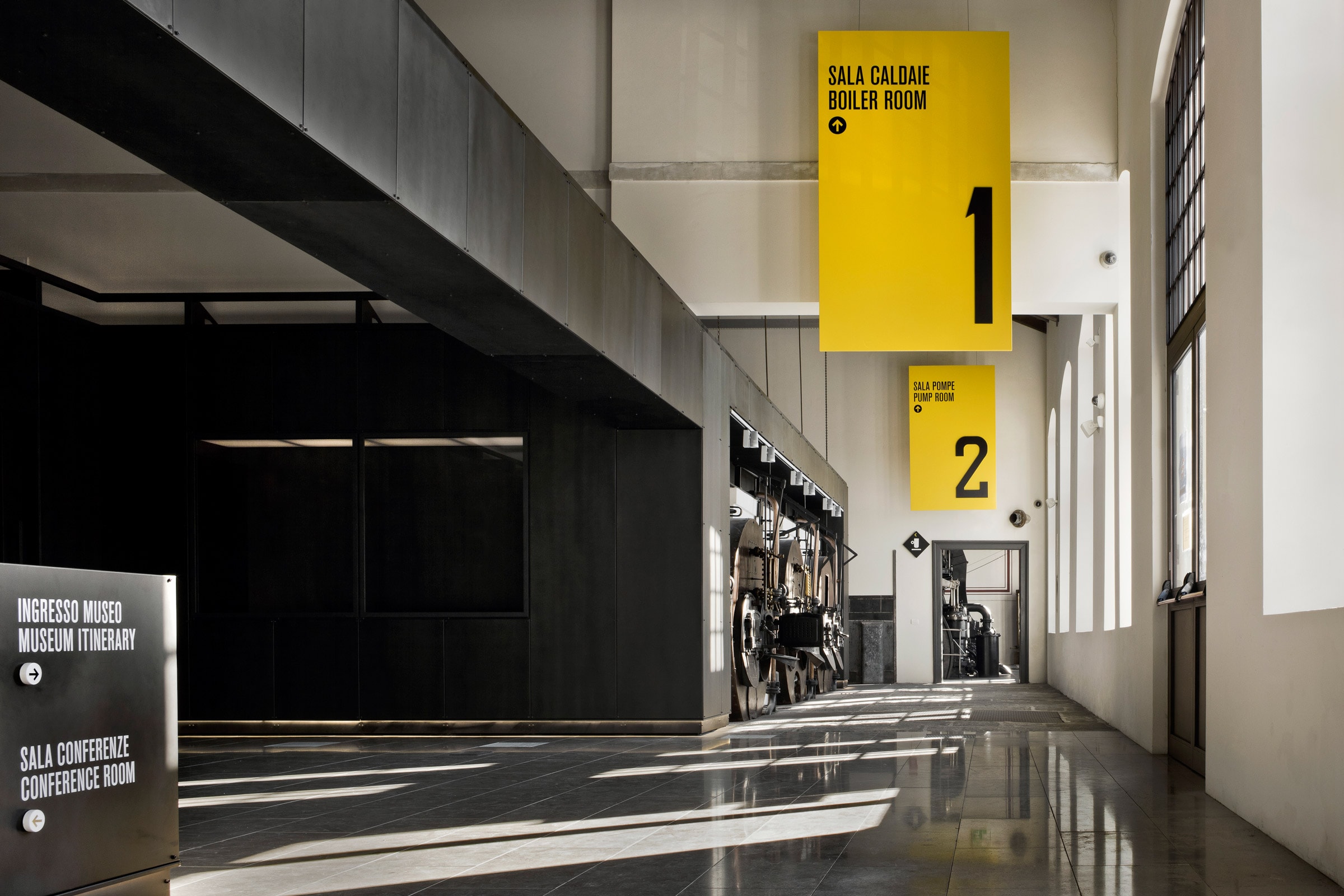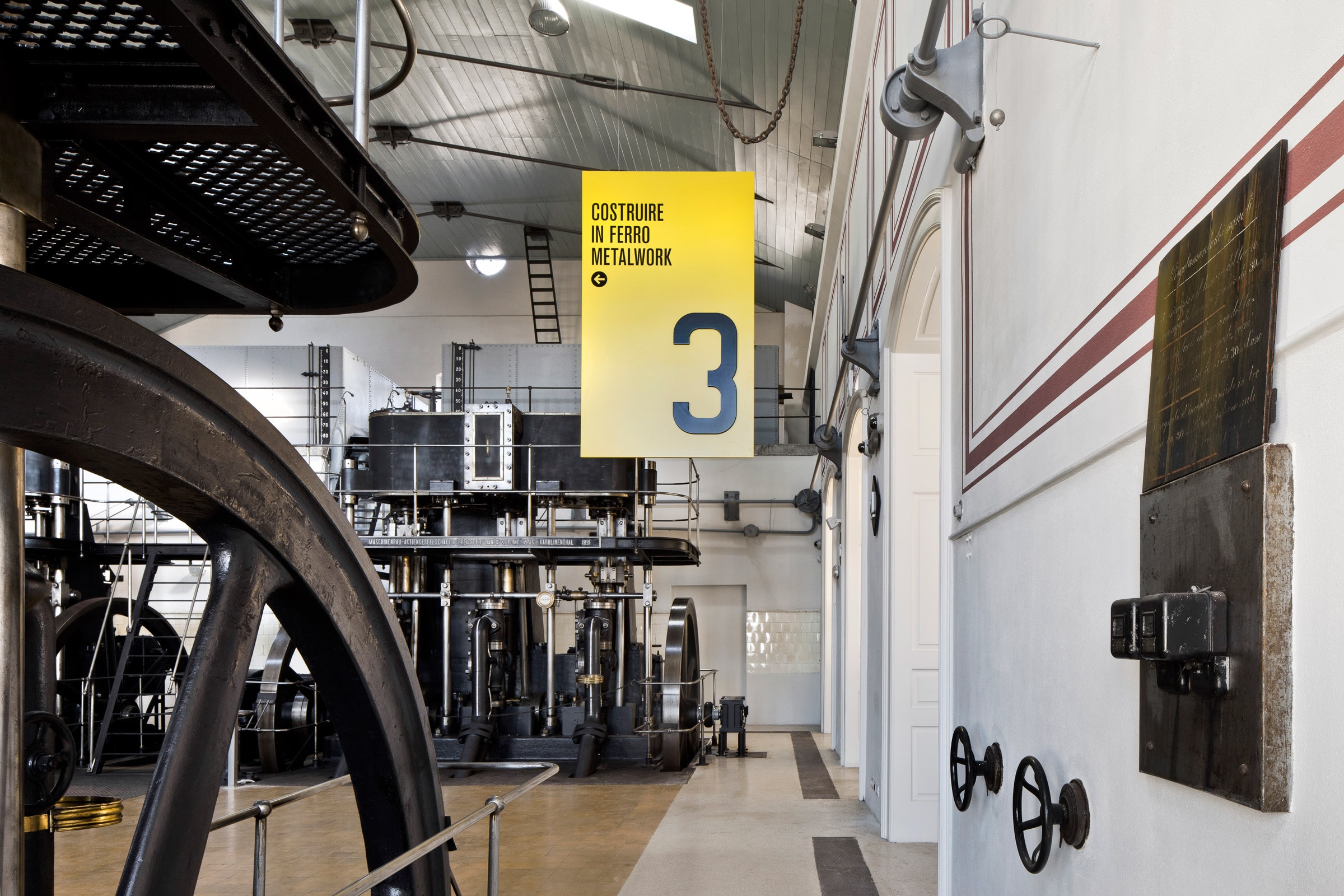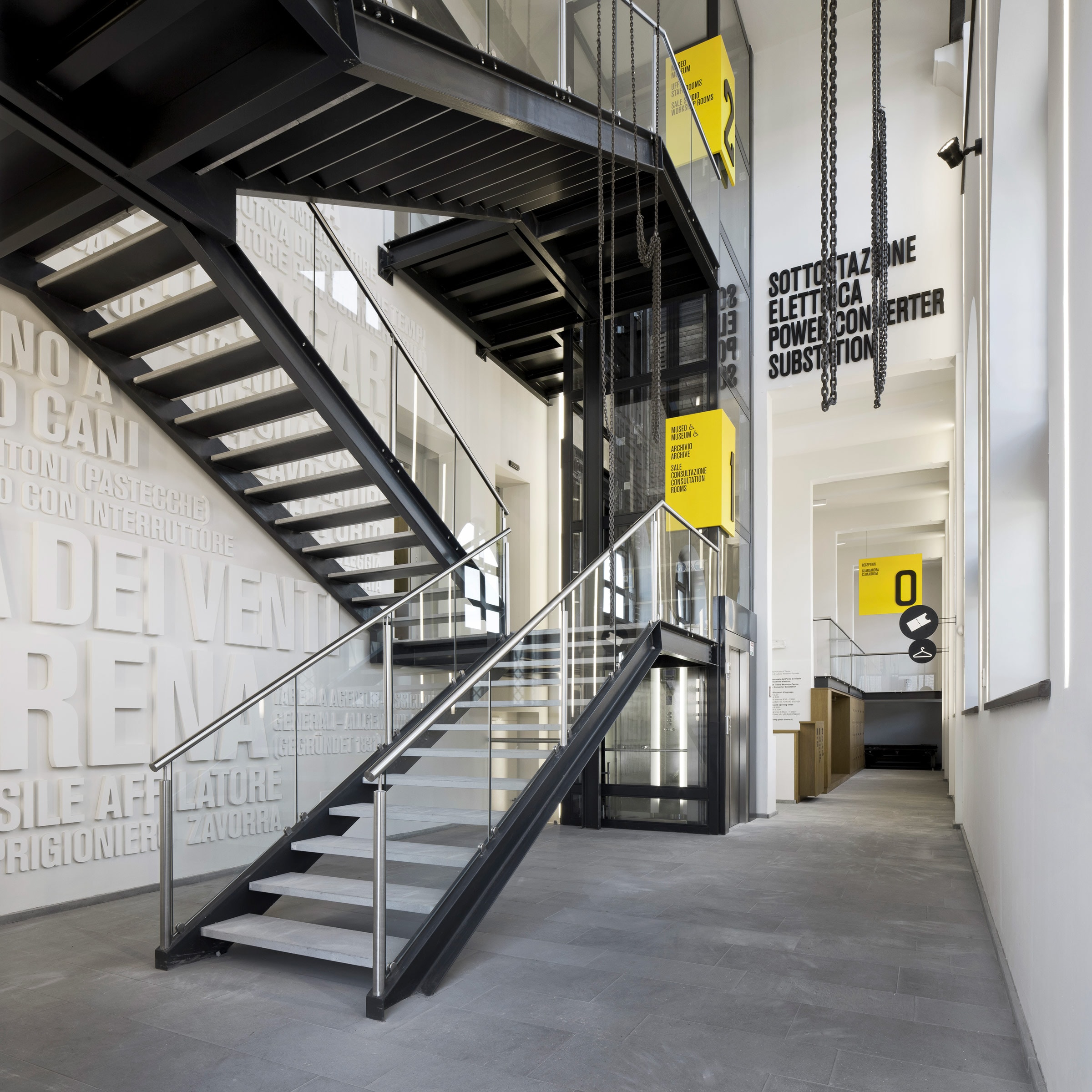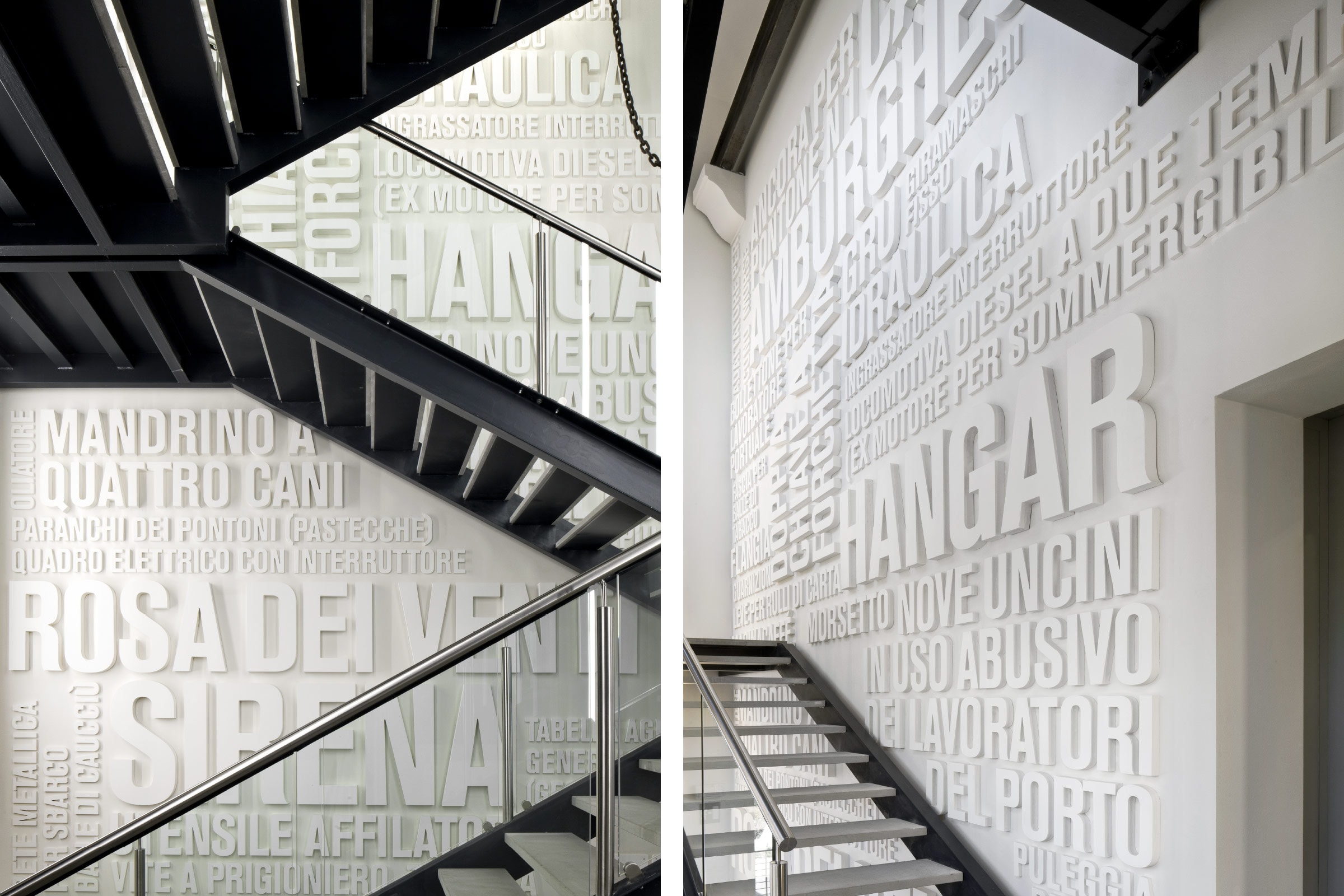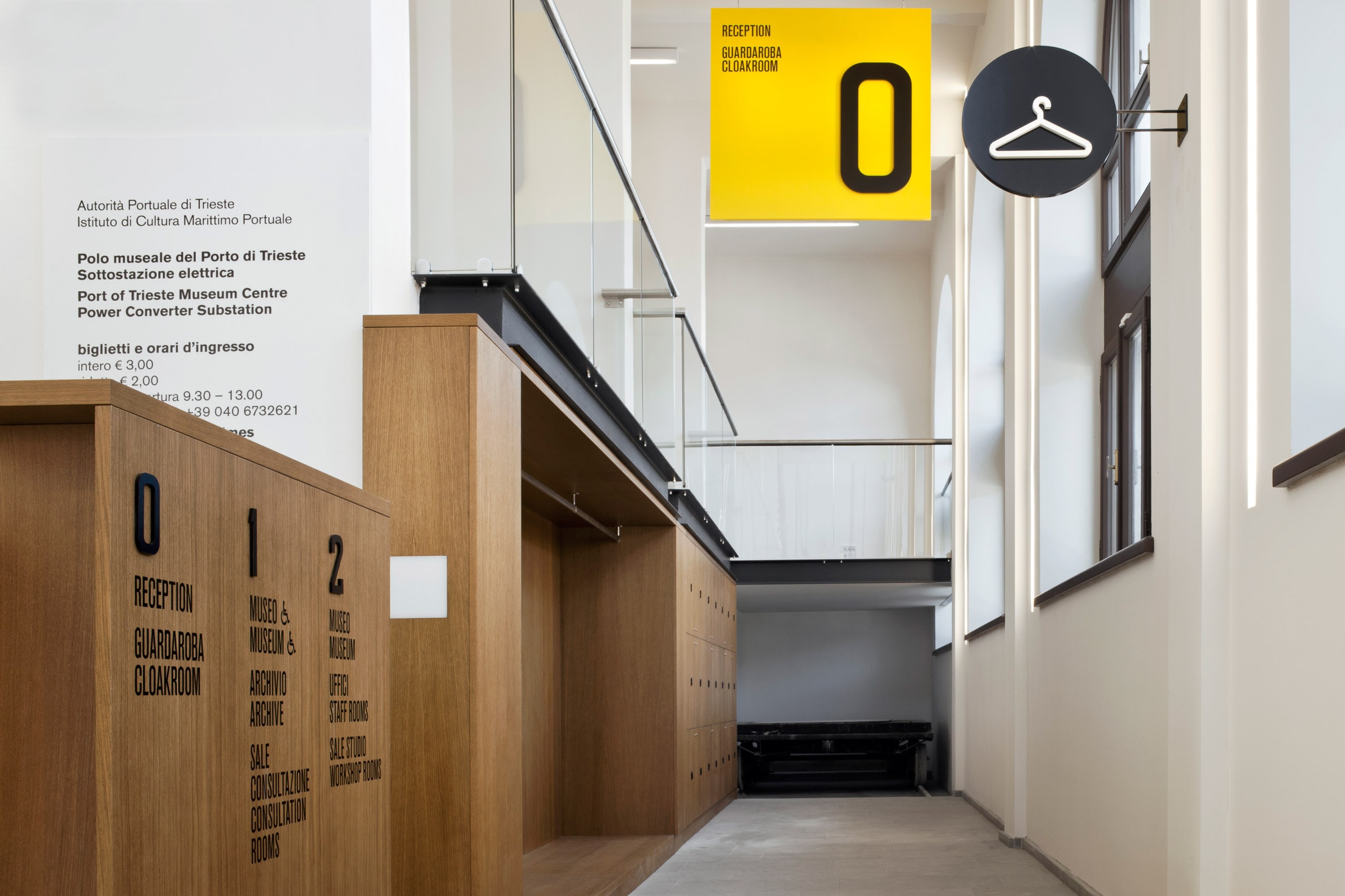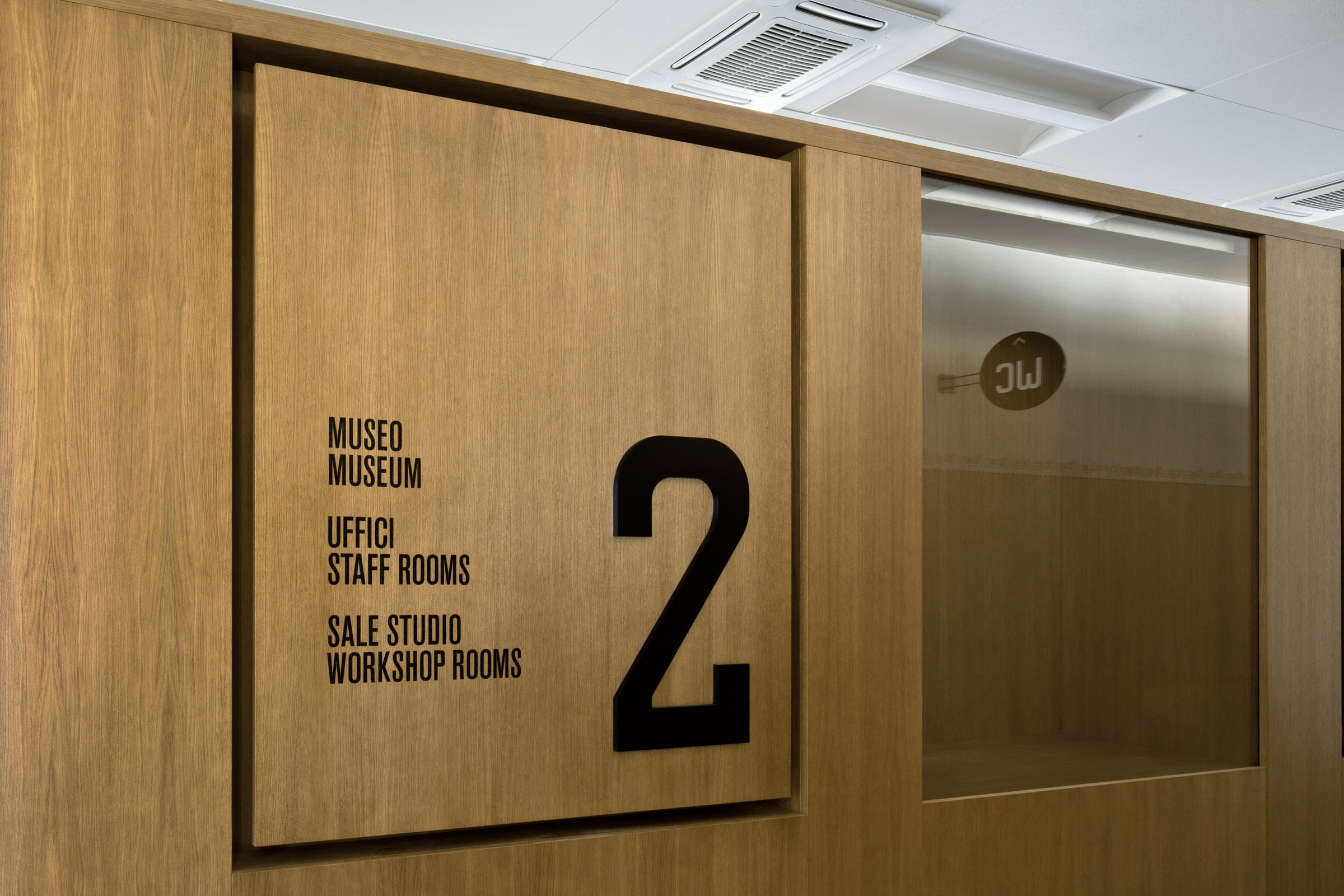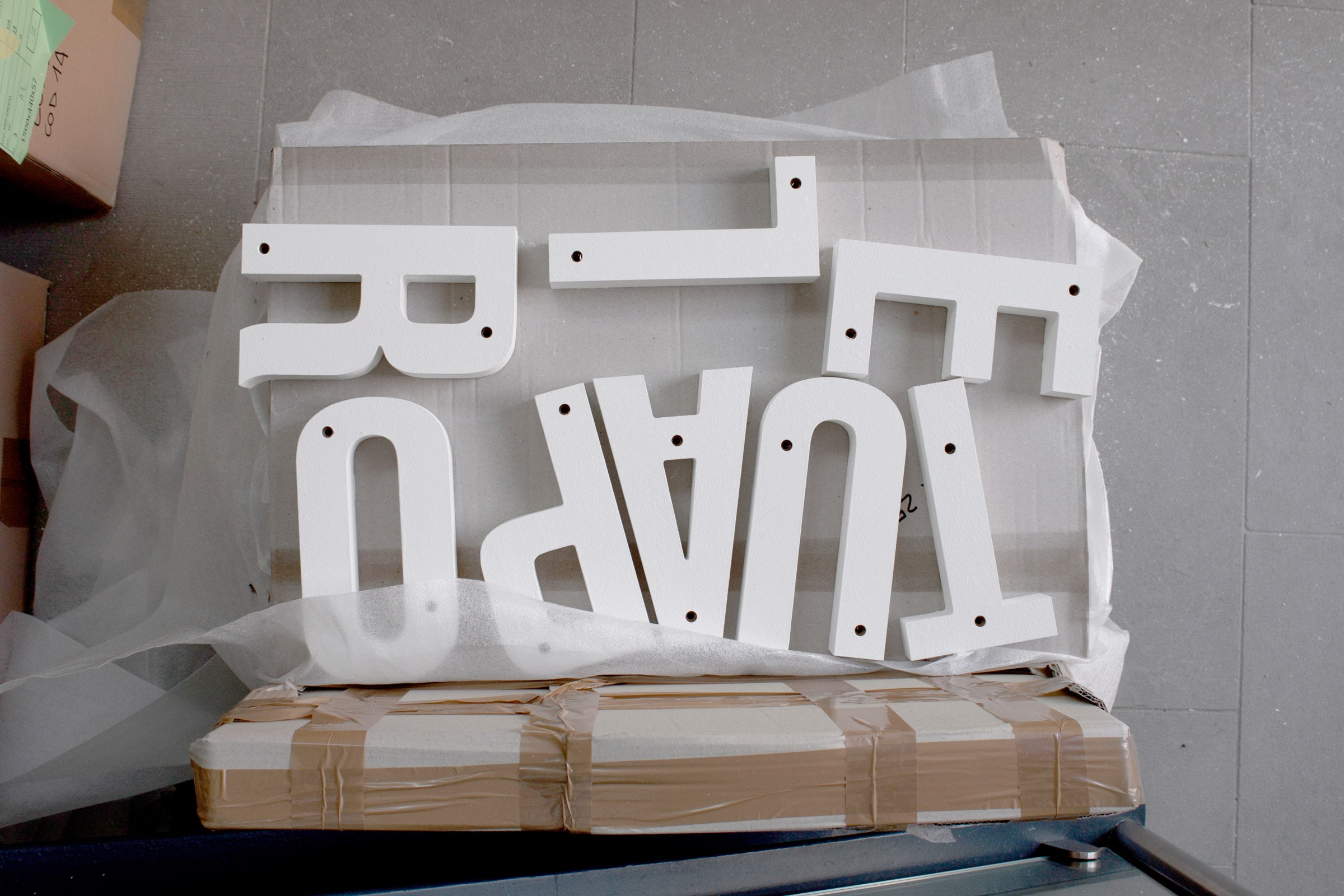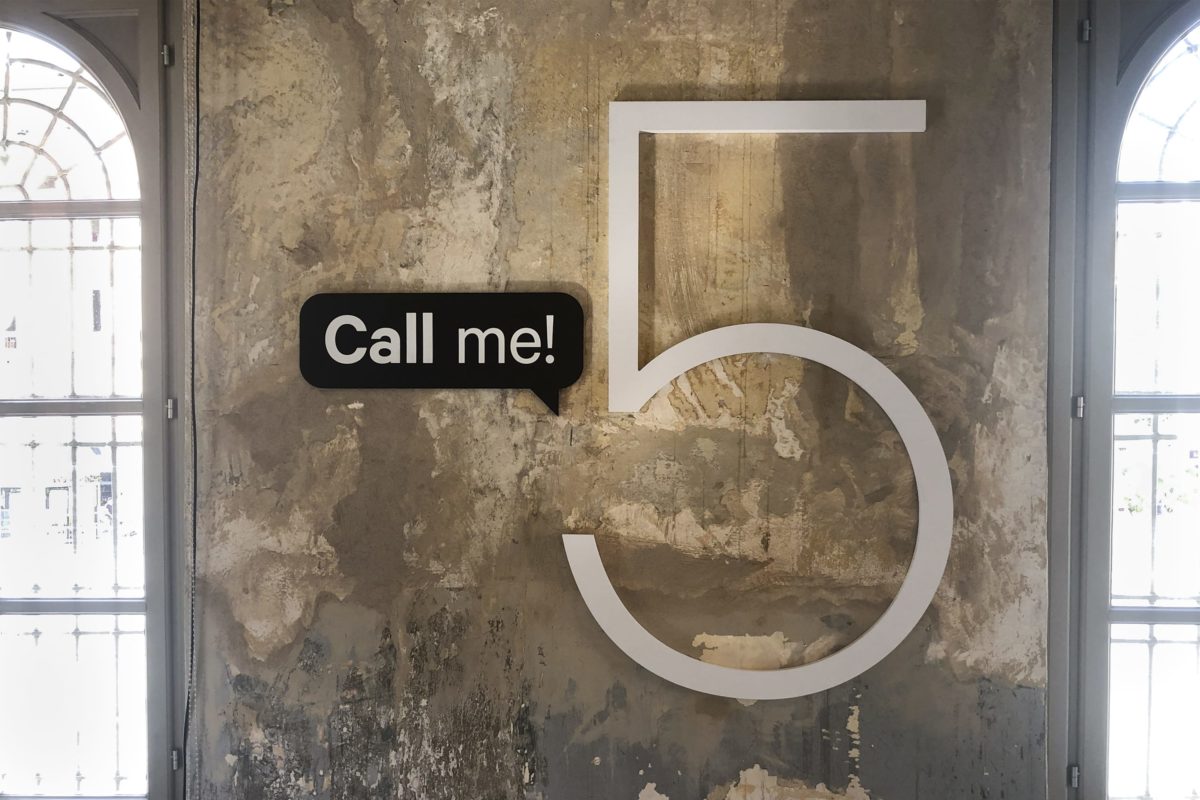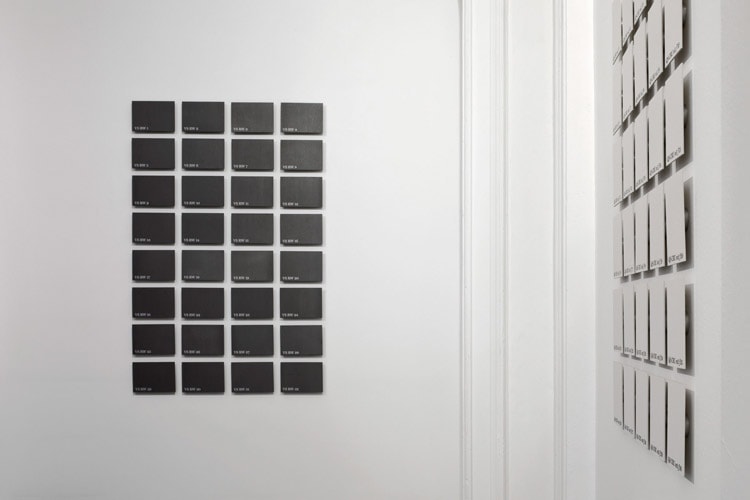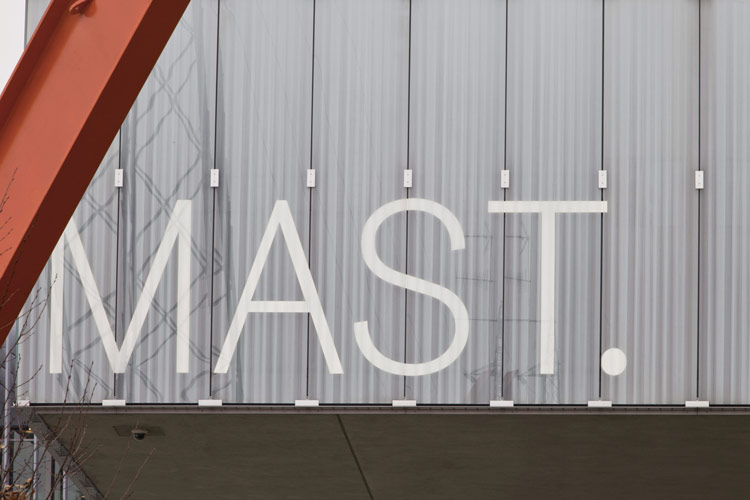Museo del Porto di Trieste
The Old Port in Trieste is one of the main urban renewal waterfronts in Europe at present time. Built starting in 1863, it includes some outstanding pieces of industrial archeology, including the Hydrodynamic Power Station and a Power Converter Station, which used to supply power and electricity to the entire area, renovated as a museum complex in 2012.
The exhibition design project has been developed in partnership
with MAP studio and MHK consulting. Preceded by the definition of a narrative concept and followed by the design of site-specific typographical installations, the project led T/V through the themes of memory, labor, people and goods, drawing upon historical documents.
The first installation, based on an inventory of materials and equipment once in use in the facilities, is located in the main entrance hall of the Power Converter Station. The second deals with the themes of labor and trade: the open space in front of the two buildings is turned into typographical installations with texts coming from the columns Chiamate d’imbarco and La Vita nel Porto – daily calls for embarkment on ships due to leave and accounts on the handling of goods, as published by the local newspaper until the 1970s.
Il Porto Vecchio di Trieste rappresenta attualmente uno dei principali waterfront oggetto di riqualificazione urbana in Europa. Edificato a partire dal 1863, offre esempi eccezionali di archeologia industriale: tra questi la Centrale Idrodinamica e la Sottostazione elettrica, che fornivano forza motrice e energia elettrica a tutta l’area, ristrutturate nel 2012 con destinazione museale.
Il progetto esecutivo di allestimento degli spazi museali, elaborato in collaborazione con MAP studio e MHK consulting, preceduto dalla messa a fuoco del concept narrativo e seguito dalla realizzazione di alcune installazioni tipografiche specifiche, ha impegnato T/V sui temi della memoria, del lavoro, degli uomini e delle merci, sviluppati attraverso il ricorso alla documentazione storica.
La prima installazione, basata sul regesto delle attrezzature e dei materiali un tempo presenti nei capannoni, occupa il grande ingresso della Sottostazione Elettrica. La seconda svolge i temi del lavoro dell’uomo e dello scambio delle merci: dagli archivi del quotidiano locale vengono estratti i testi delle rubriche Chiamate d’imbarco e La Vita nel Porto – fino agli anni ’70 giornaliere richieste di personale da imbarcare sulle navi in partenza e resoconti delle movimentazioni di merci – e trasformati in installazioni tipografiche che disegnano lo spazio antistante i due edifici.
